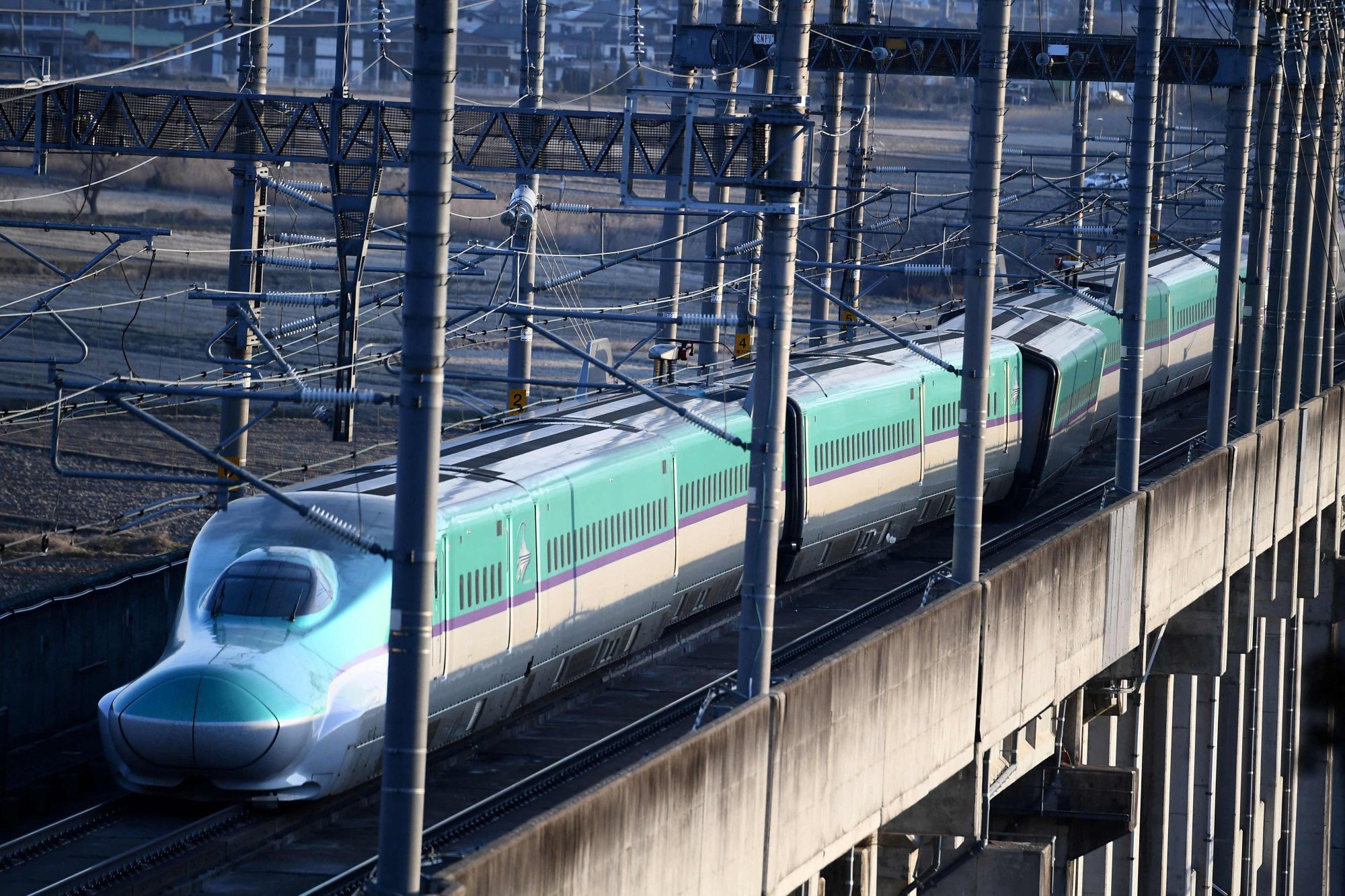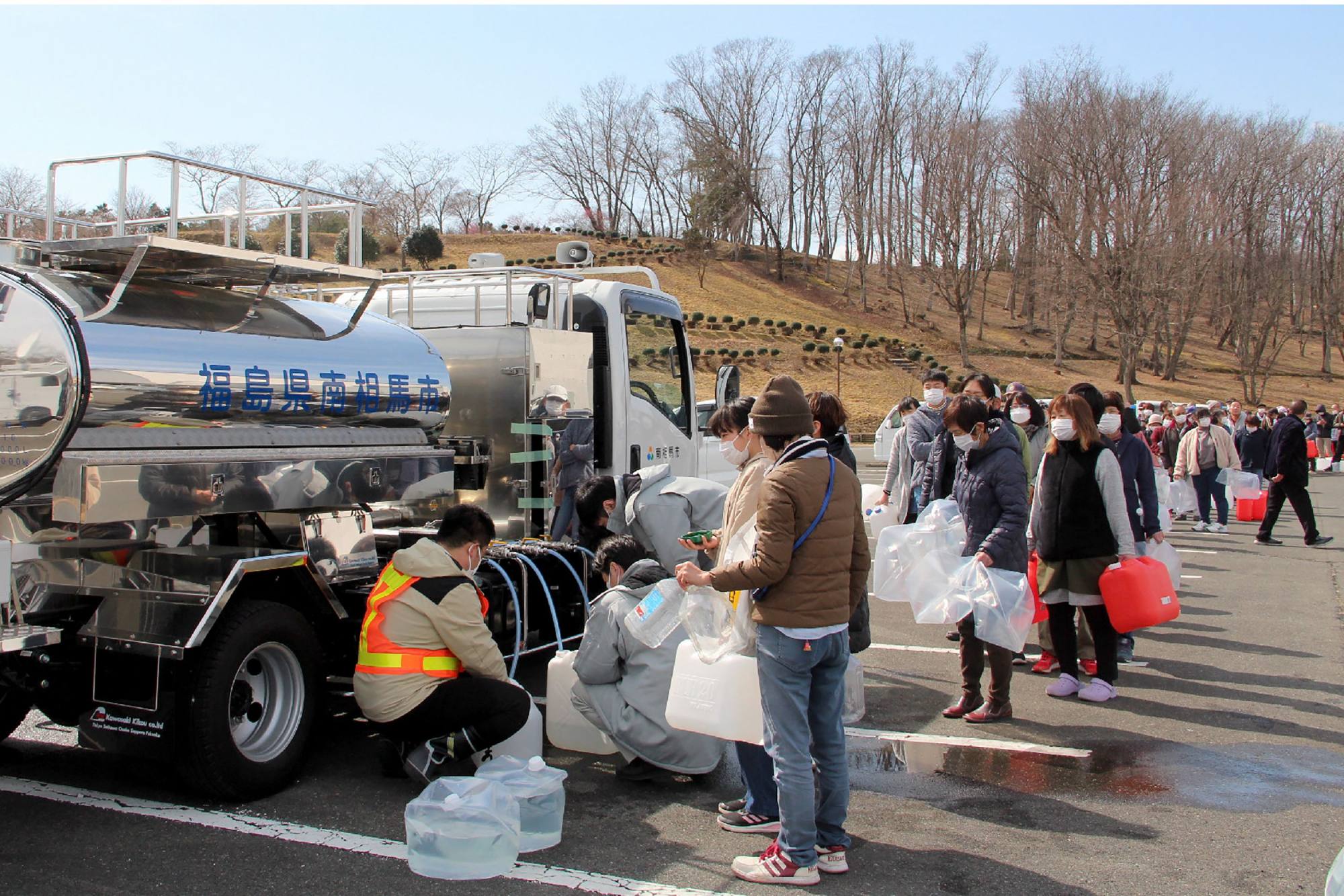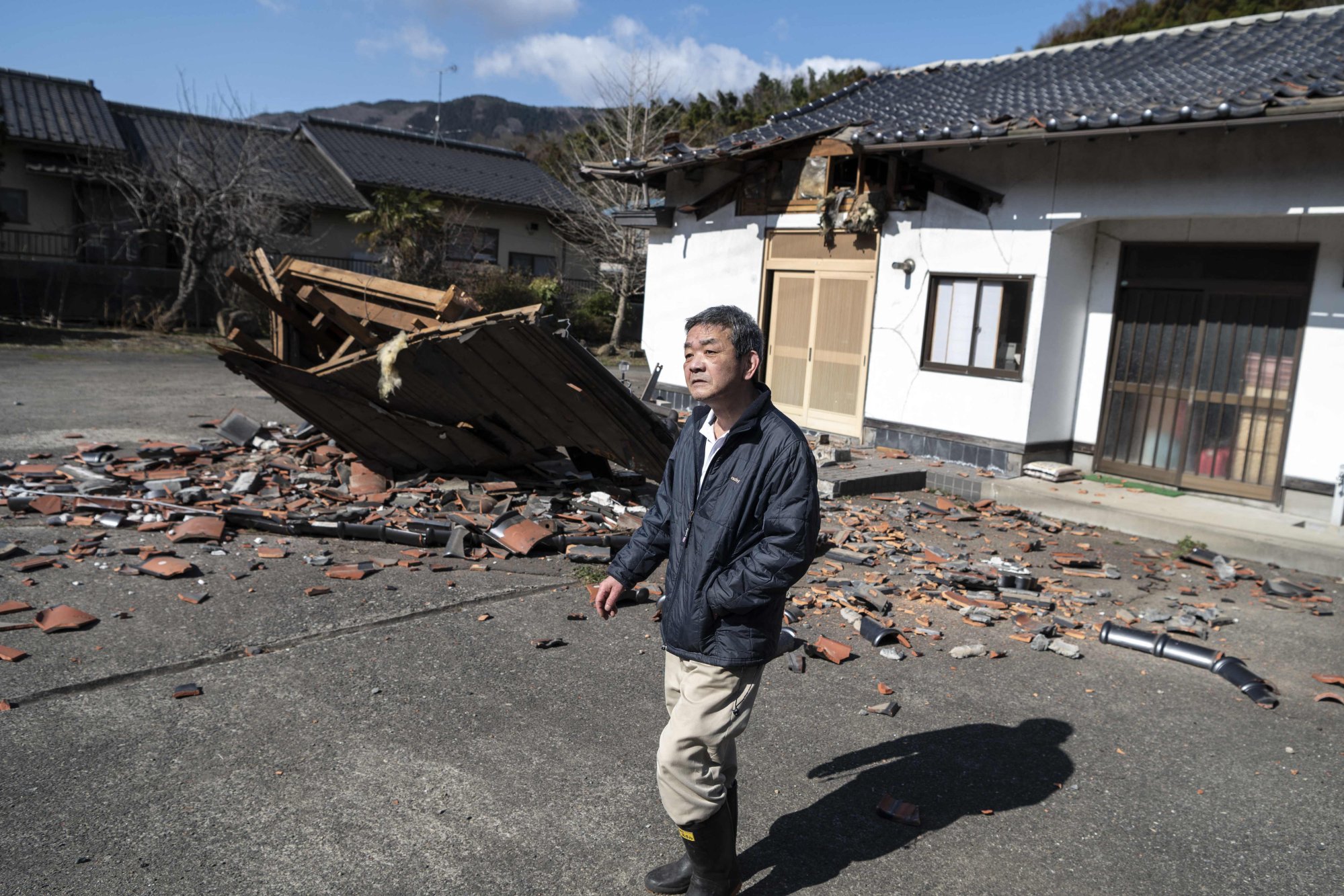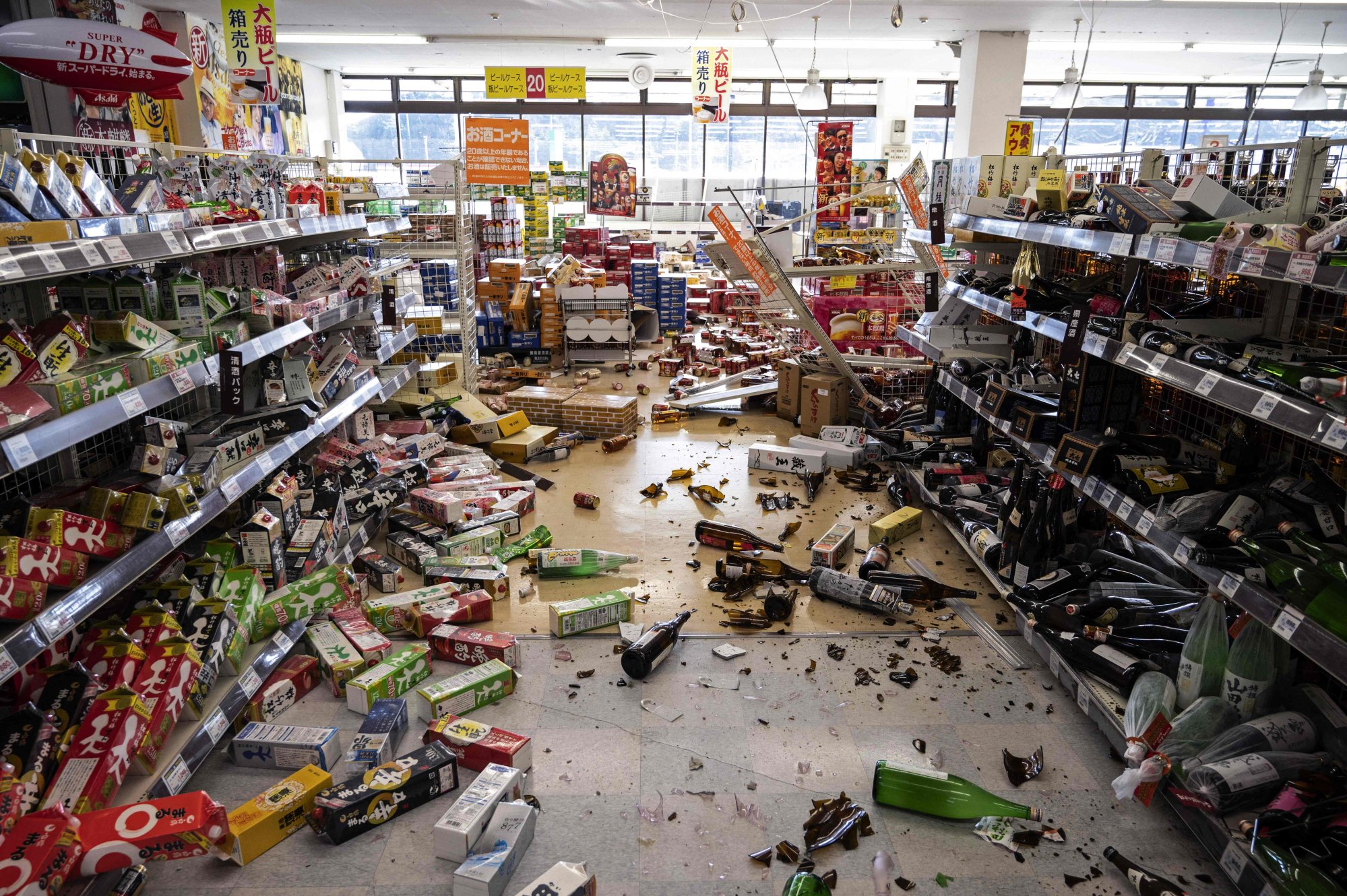
Strong earthquake off Japan’s Fukushima leaves thousands powerless, kills 4
- The magnitude 7.4 tremor took place a week after the 11th anniversary of the March 2011 tsunami and nuclear disaster
- Thousands of homes in Japan’s northeast were still waiting for power while a Shinkansen service was indefinitely suspended after a bullet train derailed
Companies including Toyota and chip maker Renesas Electronics Corp raced to assess the impact, with any supply chain disruption likely to add pressure to strained global output of smartphones, electronics and automobiles.
Wednesday’s quake left a Shinkansen bullet train service indefinitely suspended after it derailed with some 100 people on board, although there were no reports of injuries.
At least one major highway to the region closed for safety checks.
“This one felt different [to the 2011 quake], it was huge. I had to hang on to something to stay upright,” said Aoi Hoshino, who owns a bar in Fukushima and had customers when the quake struck.
One of her customers shrugged off the initial tremors, but when the biggest one hit he stood up and shouted, “This is a big one!” she recalled.

The damage was minimal save a few framed pictures and cups that fell, thanks to rails Hoshino had added to shelves to stop bottles from falling in the event of an earthquake.
“For a while my hands wouldn’t stop shaking,” she said.
Parts of building facades tumbled into streets below in some areas. Television footage showed a steep tiled roof crumpled over a parked, crushed car and workers examining cracked highways.
About 300km km south of Fukushima, areas of the capital Tokyo lost power immediately after the quake, though most regained it within three hours.
But some 5,775 households serviced by Tohoku Electric Power Co Inc in the northeast remained without electricity as of noon local time on Thursday, though the firm said it expected most will have supply restored later in the day.
A man in his 60s in Soma city died after falling from the second floor of his house while trying to evacuate, and a man in his 70s panicked and suffered a heart attack, Kyodo News reported earlier. Kishida said the government would be on high alert for the possibility of further strong tremors over the next two to three days.
At least 107 people were reported injured, several of them seriously, with 4,300 households still without water by midmorning. Residents of one Fukushima city formed a long queue in a car park to fill up plastic tanks with water for use at home.

The quake, initially measured at magnitude 7.3 but later revised up to 7.4 by the Japan Meteorological Agency, hit at 11.36pm local time just off the coast of Fukushima prefecture at a depth of 60km. The 2011 quake and tsunami off Fukushima – commemorated across the country less than a week ago – left some 18,000 dead.
A tsunami warning was issued but cancelled early on Thursday morning. Some areas reported a rise in the sea level but no serious damage was immediately reported.
The 2011 disaster also set off meltdowns at the Fukushima Daiichi nuclear power plant. No abnormalities were reported at any nuclear power plants, although authorities had earlier said a fire alarm had been triggered at a turbine building at the crippled plant.
Manufacturers were trying to gauge the potential damage to their facilities.

Renesas, a major supplier of automotive chips, said it had suspended production at two semiconductor plants and partially stopped output at a third.
Among them is its Naka plant in Ibaraki prefecture just north of Tokyo, which supplies semiconductors to auto companies worldwide that have already had to curb output because of chip shortages resulting from Covid-related disruption.
Toyota said it had cancelled the day shift at two factories in northeast Japan after workers evacuated the plants during their evening shift on Wednesday. The carmaker said it will decide on the evening shift later.

Mizuho Financial Group Inc’s main banking arm said some of its ATMs temporarily stopped operations due to power outages, but that they had all been restored to service.
In an attempt to cover the area affected by the Shinkansen outage, All Nippon Airways said it had added extra flights to the northern city of Sendai. There were no forecasts of when regular rail service might be restored.
Japan’s benchmark Nikkei stock average jumped, with no impact seen from the quake.
Sitting on the boundary of several tectonic plates, Japan experiences around a fifth of the world’s earthquakes of magnitude 6 or greater.

